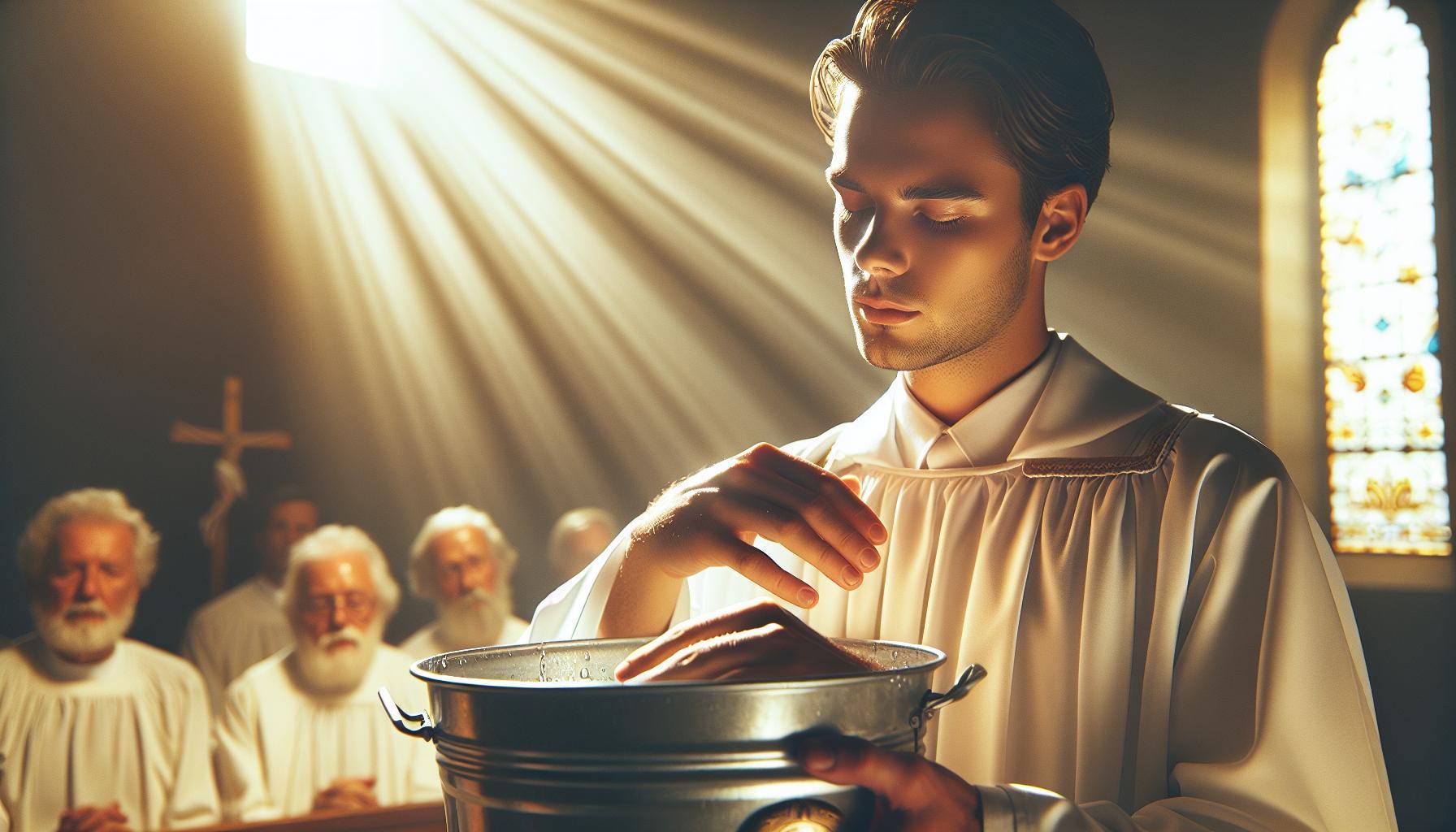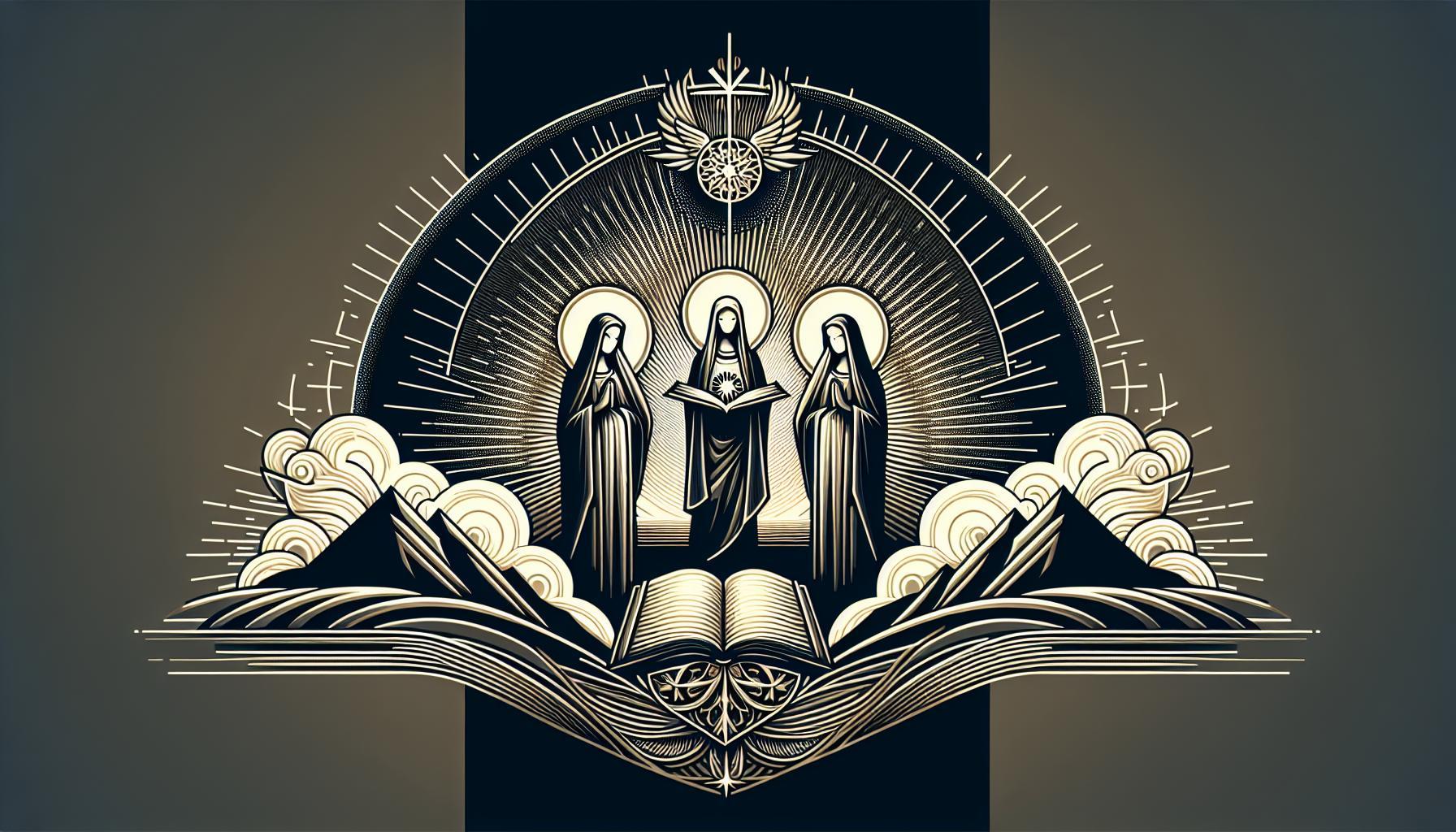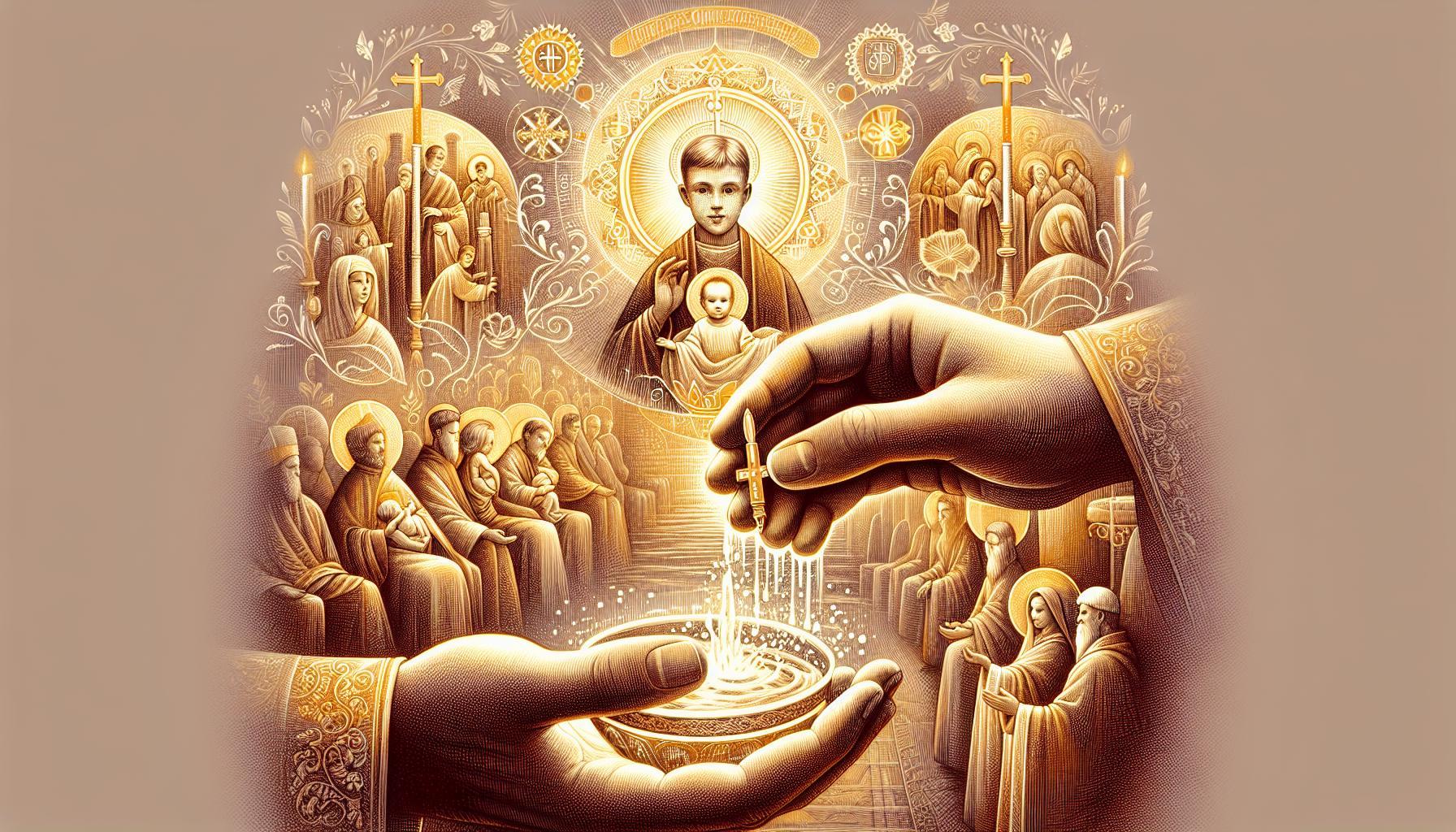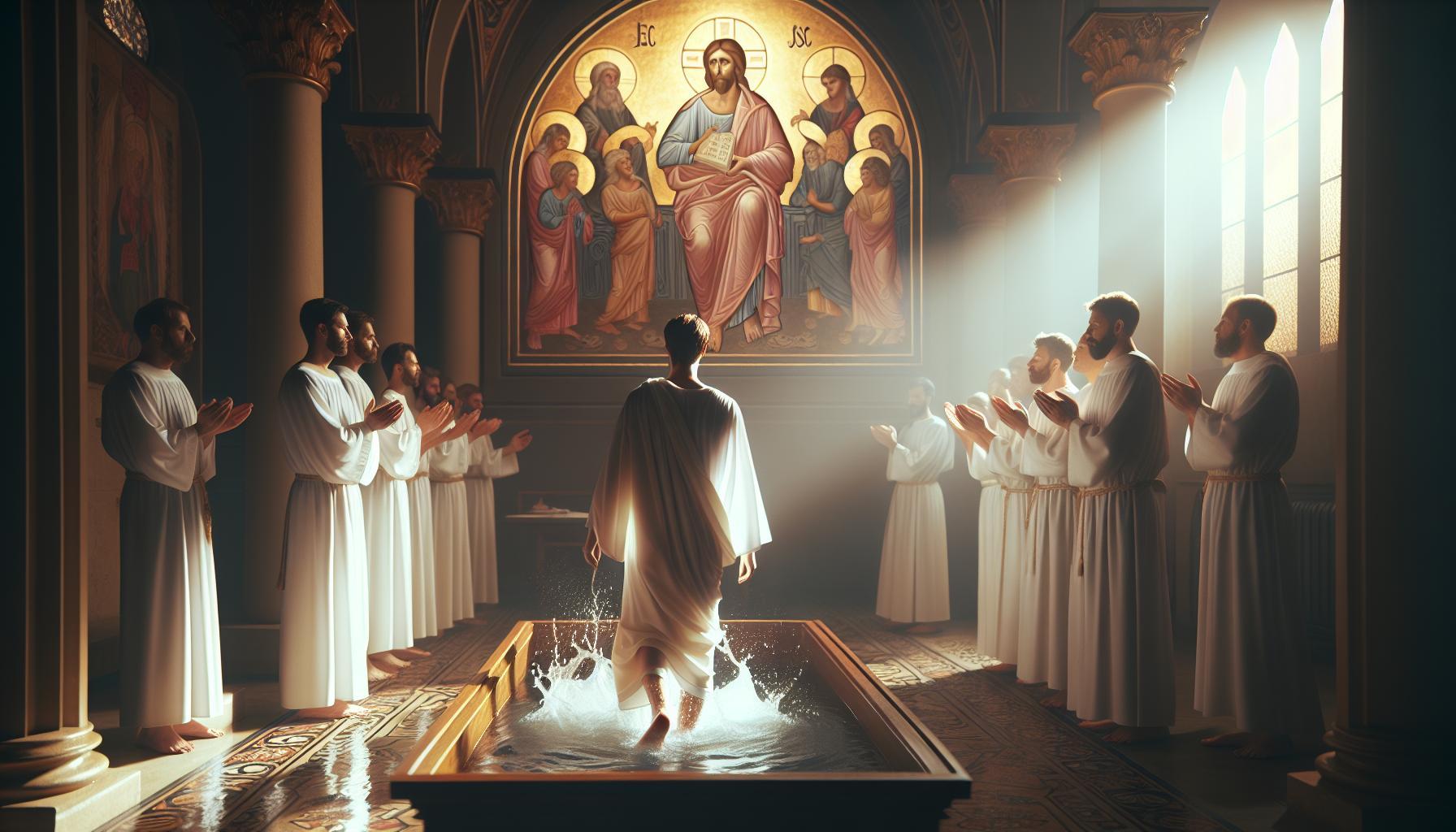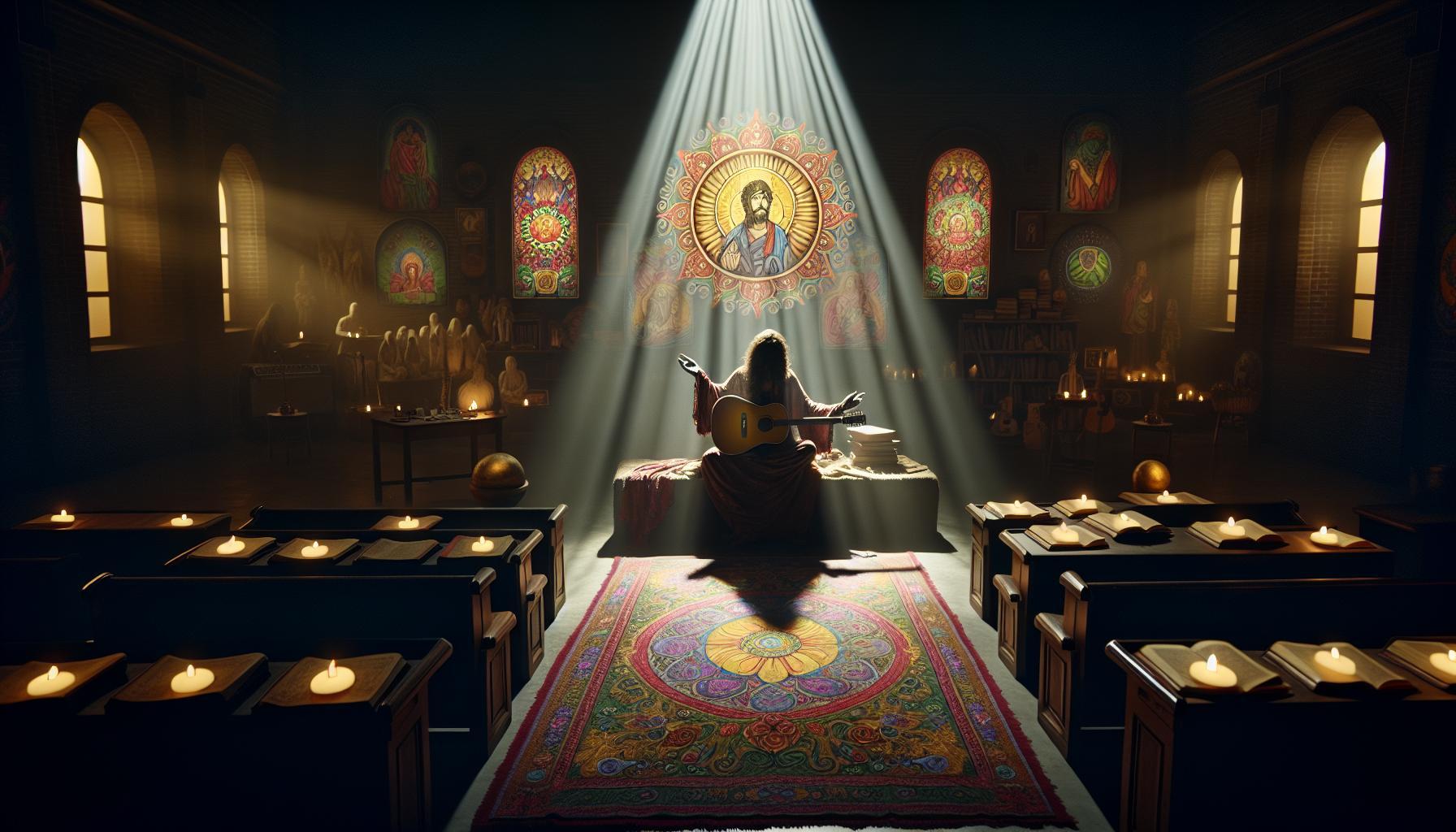When planning a baptism, one pressing question often arises: how long does the ceremony last? Understanding the duration of baptisms across various denominations can help families prepare for this significant occasion. This article explores the typical timeframes and customs associated with baptism, ensuring you know what to expect on this important day.
Understanding the Importance of Baptism in Different Denominations
Exploring the role of baptism offers a glimpse into the rich tapestry of Christian traditions. This sacred ritual serves not just as a ceremony but as a profound declaration of faith, varying significantly across denominations. Each group imbues the act of baptism with its own theological significance and cultural nuances, influencing how long the rituals last and how they are conducted.
Symbolism and Significance
Baptism is frequently viewed as a rite of initiation into the Christian faith, symbolizing purification and rebirth. The meanings attached to this act can differ dramatically among denominations:
- Roman Catholic: In Catholicism, baptism is one of the seven sacraments and is considered necessary for salvation. Infants are commonly baptized, marking their entry into the church community. The typical duration of a Catholic baptism ceremony is about 30 to 60 minutes, depending on the service context.
- Baptist: Baptists emphasize believer’s baptism, which occurs when an individual has made a personal confession of faith. The procedure is often more extensive, involving full immersion in water, and can last from 15 to 30 minutes depending on the church’s customs and congregation size.
- Orthodox: The Eastern Orthodox Church approaches baptism with a strong focus on tradition, often incorporating a series of rituals. An Orthodox baptism can take anywhere from 30 to 90 minutes, filled with prayers, anointing, and other sacramental elements that highlight its spiritual significance.
Duration and Ceremony Context
Despite the differences in duration and practice, the overarching theme across denominations is the depth of commitment that baptism signifies. Below is an overview of how long baptisms typically last, categorized by major Christian groups:
| Denomination | Typical Duration | Key Elements |
|---|---|---|
| Roman Catholic | 30-60 minutes | Infants or adults, water use, chrism anointing |
| Baptist | 15-30 minutes | Believer’s baptism, full immersion |
| Eastern Orthodox | 30-90 minutes | Multiple rituals, anointing, full immersion |
| Methodist | 20-40 minutes | Infants & adults, sprinkling or immersion |
Understanding these nuances not only enriches our appreciation of baptism’s importance but also enhances inter-denominational dialogue. Whether you’re observing or participating in a baptism, being informed about its significance across different traditions can deepen your connection to this universal aspect of Christian life.
Typical Length of Baptism Ceremonies: What to Expect
Baptism ceremonies come in various forms, shaped by the diverse beliefs and traditions of different denominations. Understanding the typical length of these ceremonies can help you prepare and ensure that your expectations align with the spiritual significance of this important event. From brief, intimate gatherings to elaborate occasions, the duration of a baptism can vary widely, often influenced by the specific rites involved.
General Duration Across Denominations
Most baptism ceremonies tend to fall within a specific time frame, but knowing the nuances can make a big difference in your experience. Here’s a quick overview of approximate durations by denomination:
| Denomination | Typical Length |
|---|---|
| Roman Catholic | 30-60 minutes |
| Orthodox | 60-90 minutes |
| Protestant | 20-40 minutes |
| Baptist | 30 minutes |
| Methodist | 30-45 minutes |
| Lutheran | 30-60 minutes |
While these are general guidelines, remember that specific timings can fluctuate based on various elements, including the church’s practices, whether it’s a special occasion, or if there are multiple baptisms happening on the same day.
Factors Influencing Ceremony Length
The ceremony length is often influenced by several key factors:
- Preparation: Some churches require pre-baptism classes for parents and godparents, which can add to the overall time commitment.
- Service Structure: In many denominations, baptism is part of a larger service that may include readings, songs, and prayers, all of which can extend the duration.
- Size of the Group: If multiple individuals are being baptized, this can significantly lengthen the ceremony, as each baptism typically involves a unique blessing and commitment.
- Cultural Traditions: Certain cultural or family traditions may also be integrated into the ceremony, adding personalized elements that can influence the total time.
To further enhance your experience, communicating with your pastor or the officiant ahead of time can provide clarity on what to expect. This way, you can plan adequately, whether you are a parent organizing your child’s baptism or an attendee wishing to support a loved one.
Understanding “How Long Do Baptisms Take: Ceremony Duration Across Denominations” can alleviate any potential anxiety about the day. By being informed of the approximate lengths and influential factors, you’ll be well-prepared to embrace this meaningful occasion.
Factors That Influence Baptism Duration Across Traditions
Baptism, a sacred rite observed by many faiths, varies significantly not only in its spiritual significance but also in its duration. If you’re exploring how long baptisms typically take, it’s fascinating to discover that several factors across different denominations influence this duration. Understanding these factors can help families and individuals prepare adequately for this important milestone.
Denominational Differences
One of the primary factors affecting baptism duration is the specific tradition or denomination. Each faith possesses unique beliefs and practices that shape their baptism ceremonies. For example:
- Roman Catholicism: Baptisms here often include a liturgy, readings, and the anointing with chrism, which can extend the ceremony to around 30 minutes.
- Baptist Churches: Typically emphasizing believer’s baptism, these ceremonies may be shorter, often lasting around 10-15 minutes, particularly if conducted during a regular service.
- Orthodox Christianity: Known for its rich traditions, an Orthrdox baptism can last over an hour, involving multiple rituals and components that underscore the sacramental nature of the event.
Ceremony Elements
The length of a baptism can also be influenced by the specific elements included within the ceremony. These may include:
- Scripture Readings: Some denominations incorporate extensive readings and prayers, adding to the ceremony’s length.
- Music: Hymns or other musical elements can enhance the event but may also contribute to a longer duration.
- Rituals and Symbols: Additional rites, such as the signing of the cross or lighting of a baptismal candle, can further extend the time required for the ceremony.
Visitor Participation
The presence and involvement of family and friends can also influence how long a baptism takes. In some cases, congregational participation includes prayers and blessings, which can vary in length depending on the audience. For example, a more intimate setting with fewer guests may lead to a shorter ceremony, whereas large gatherings can evolve into longer events filled with personal testimonies and communal celebrations.
To provide a clearer understanding of these nuances, a comparison table highlighting the potential duration of baptism ceremonies among different denominations could be beneficial:
| Denomination | Typical Duration |
|---|---|
| Roman Catholic | 30 minutes |
| Baptist | 10-15 minutes |
| Orthodox | 1 hour or more |
| Methodist | 20-30 minutes |
In conclusion, when pondering the question of how long baptisms take, it’s clear that denominational customs, ceremony elements, and the involvement of the congregation play pivotal roles in determining the duration. Whether preparing for a shorter service or a more elaborate ritual, understanding these factors helps set realistic expectations for this significant religious milestone.
Comparing Traditional and Modern Baptism Practices
The rich tapestry of baptism practices reflects the diversity of beliefs and traditions across various denominations. From intimate home ceremonies to large-scale church events, the duration and style of baptisms can vary significantly. Understanding these differences is not only intriguing but also essential for anyone preparing for a baptism, whether for themselves or their child.
Traditional Baptism Practices
Traditional baptism methods often emphasize a deep-rooted ritual and extensive community involvement. For many denominations, including Roman Catholicism and Eastern Orthodoxy, baptism is performed as an infant ceremony. This includes the following elements:
- Ritualistic Water Application: Traditionally, water is applied either by full immersion or by sprinkling, accompanied by prayers and blessings.
- Godparents: The presence of godparents is significant, as they vow to guide the child in faith.
- Community Gathering: These ceremonies often occur during a church service, fostering a communal experience.
The duration of a traditional baptism service typically ranges from 30 minutes to over an hour, depending heavily on the rituals involved and the overall church service context.
Modern Baptism Practices
Conversely, modern baptism practices have evolved to accommodate contemporary lifestyles and sensibilities. Many Protestant denominations, for instance, have shifted towards a more personal and less formalized approach. Key characteristics of modern baptism include:
- Personalized Ceremonies: Families may opt for smaller, more intimate settings, such as private homes or unique venues.
- Symbolic Acts: Many modern baptisms focus on the symbolism behind the act rather than strict ritual, emphasizing the personal testimony of faith.
- Flexible Timing: Modern ceremonies can vary greatly in length, often lasting anywhere from 15 to 30 minutes.
| Denomination | Traditional Duration | Modern Duration |
|---|---|---|
| Roman Catholic | 30-60 minutes | N/A |
| Eastern Orthodox | 40-90 minutes | N/A |
| Baptist | N/A | 15-30 minutes |
| United Methodist | N/A | 20-40 minutes |
Ultimately, the contrast between traditional and modern baptism practices speaks to a broader conversation about faith’s role in contemporary life. Understanding how long baptisms take across denominations can help families make informed decisions about their own ceremonies, honoring both the heritage of the past and the needs of the present.
The Role of Preparation: How It Affects Ceremony Length
Preparation is a critical element that significantly influences the duration of baptism ceremonies across various denominations. From church leaders to families preparing their young ones for this sacred rite, the amount of time and effort dedicated to preparation can vary widely. Understanding this dynamic can illuminate why some baptisms feel brief, while others extend into elaborate celebrations. Factors such as the religious denomination, the age of the individual being baptized, and the specific rituals involved all contribute to the length of the ceremony.
Key Factors in Preparation
Several elements can affect how long a baptism takes, largely revolving around the preparatory aspects involved. These include:
- Instructional Classes: Many denominations require candidates, especially older children and adults, to attend classes to understand the significance of baptism. This preparatory phase alone can add substantial time to the overall experience.
- Customs and Rituals: Different faiths have unique rituals that may demand more time. For example, a Catholic baptism often includes anointing with oil, lighting of the baptismal candle, and a procession that can lengthen the ceremony.
- Family Involvement: Engaging family members in the preparation—such as godparent selection and rehearsal—can also extend the time needed not only on the day of baptism but in the weeks leading up to it.
- Personalization of the Ceremony: Some families opt to personalize the service with additional elements like readings, musical performances, or even a thematic element that might include synchronizing decorations or attire.
Real-World Examples
Consider the difference between a quick baptism service in a non-denominational church, which may take roughly 30 minutes, and a traditional Anglican baptism that can extend to over an hour due to its detailed liturgy and inclusion of family participation. A theological seminar often warns that rushing through preparations can lead to a superficial experience, which is why a thoughtful approach to preparation pays dividends in richness and meaning.
While the average duration of a baptism might hover around a standard 30 to 60 minutes, those who invest in thorough preparation often find that the experience is more impactful, fostering spiritual connections that last well beyond the ceremony itself. Thus, integrating time for adequate preparation not only enriches the ceremony’s content but also alters its length, paving the way for a more profound engagement with the act itself.
| Denomination | Typical Length of Ceremony |
|---|---|
| Baptist | 30-45 minutes |
| Catholic | 45-60 minutes |
| Orthodox | 60-90 minutes |
| Nondenominational | 30 minutes |
In summary, the role of preparation is not merely procedural; it fundamentally shapes the experience of baptism, influencing both its duration and depth. Families and church leaders should recognize that investing time and effort into preparing for this significant milestone can transform the experience for all involved.
Personal Stories: Experiences From Various Denominational Baptisms
When it comes to the deeply personal and spiritual milestone of baptism, experiences can vary widely—from the method of immersion to the length of the ceremony. Each denomination brings a unique flavor to what is often considered a rite of passage, making it an enriching aspect of their faith practices. Understanding these diverse experiences can provide insight into the significance of baptism across various communities.
Immersion in the River: A Symbolic Experience
Imagine standing by a flowing river, the sun glinting off the surface of the water, as you wait to be immersed in a significant act of faith. For many Baptists, this is more than a procedure; it’s an embodiment of their beliefs. Typically, these ceremonies last around 30 minutes to an hour, incorporating worship music, scripture readings, and often communal participation. The immersion signifies the believer’s identification with Christ’s death and resurrection, creating a poignant moment filled with emotional weight.
Sprinkling Rituals: A Swift and Sacred Tradition
In contrast, denominations such as Methodists or Presbyterians often opt for a sprinkling method, which can take as little as 15 minutes. This practice usually occurs within the context of a church service, where the congregation plays an active role. As one congregant recalled, “The simplicity of witnessing my child being sprinkled with water while the congregation sang hymns made the moment profoundly beautiful. The brevity did not lessen the impact of the rite at all.” These brief yet meaningful ceremonies help emphasize the welcoming aspect of baptism into the larger church community.
Liturgical Depth: The Catholic Approach
The Catholic tradition offers a more elaborate baptism ceremony, often lasting from 30 minutes to 90 minutes. A recent attendee shared, “The detailed rituals covering everything from the blessing of the water to the anointing with oil created a sense of solemnity and reverence that I had never felt before.” Each step, rich in symbolism, adheres to a prescribed format that weaves together liturgy, scripture, and personal commitment, underscoring the importance of the sacrament.
Comparative Overview
| Denomination | Method | Typical Duration |
|---|---|---|
| Baptist | Immersion | 30 – 60 minutes |
| Methodist | Sprinkling | 15 – 30 minutes |
| Catholic | Pouring/Sprinkling | 30 – 90 minutes |
| Orthodox | Full Immersion | 60 – 90 minutes |
Through these personal stories and the distinctive experiences across denominations, it becomes evident that baptism is not just about the action itself; it encapsulates the spiritual journey of individuals and the communal embrace of faith, making it a cornerstone of religious practice and community identity.
Tips for Attending or Participating in a Baptism Ceremony
Attending a baptism ceremony can be both a joyful and memorable experience, tying together threads of faith, family, and tradition. Understanding the nuances of different denominations can help you navigate this sacred occasion, whether you’re a guest or an active participant. To ensure that your experience is respectful and enjoyable, keep the following tips in mind as you prepare for the ceremony, regardless of how long baptisms take across various traditions.
Preparation is Key
Before the day of the baptism, take time to learn about the specific practices and customs of the denomination involved. Different churches may have distinct rituals, prayers, or hymns, all contributing to the atmosphere of the event. Familiarizing yourself with these elements can help you feel more engaged and less out of place during the ceremony. Additionally, consider the following preparation steps:
- Confirm timing: Baptisms can vary in length, but they typically last anywhere from 30 minutes to an hour. Knowing the expected duration can help you plan your day better.
- Dress appropriately: Attire can vary by denomination, but guests should lean towards a more formal style in respect of the occasion. Inquire if the family or church has any specific dress codes.
- Understand your role: If you’re part of the ceremony – perhaps as a godparent or a family member – clarify your responsibilities beforehand to avoid any confusion on the day.
Engaging with the Ceremony
During the baptism, active participation enhances the experience, whether through prayer, singing, or simply being present. Observe the traditions involved; some denominations have more interactive ceremonies, while others may focus more on ritualistic elements. Engage in the following activities:
- Join in prayers: Most baptism ceremonies include communal prayers. Feel free to join in as a sign of unity, but ensure you’re familiar with the words if they’re traditional.
- Sing hymns: If there are hymns provided, participate enthusiastically. This is a beautiful way to express your joy for the person being baptized.
- Offer congratulations: After the ceremony, take a moment to express your well-wishes to those involved, especially the parents or guardians of the baptized individual.
Post-Ceremony Celebrations
Many families host gatherings after a baptism to celebrate the event. These can be wonderful opportunities to socialize and strengthen bonds among family and friends. Keep these tips in mind for the post-ceremony festivities:
- Bring a gift: It is a thoughtful gesture to bring a small gift for the baptized individual, such as a personalized keepsake or a religious book.
- Share stories: Utilize this time to connect with other guests. Sharing experiences about your own baptisms or family traditions can enrich the atmosphere.
- Respect traditions: Be observant and respectful of any cultural or religious practices during the gathering, which may extend the spirit of the ceremony into casual settings.
Embracing the practices and sentiments surrounding baptism can turn a simple ceremony into a cherished memory. By preparing ahead and being mindful throughout the experience, you contribute positively to the occasion while deepening your understanding of the various traditions and their significance.
Navigating Expectations: What Families Should Know About Baptism Times
Understanding the timing of baptism ceremonies can significantly influence how families plan their special day. Each denomination often has its own traditions that dictate not only the nature of the ceremony but also how long it typically lasts. With this in mind, it is essential for families to navigate their expectations effectively, ensuring that they are well-prepared for the baptism experience.
Different faith traditions approach baptism with varying degrees of formality and duration. For instance, a typical Catholic baptism usually lasts about 30 to 45 minutes, although some churches may have longer services if they incorporate extra rituals. In contrast, a Baptist baptism, often performed by immersion, is usually succinct, commonly lasting around 10 to 15 minutes. As families consider what type of baptism aligns with their values, it’s crucial they understand these differences to manage their time and guest expectations accordingly.
Key Considerations for Family Planning
To ensure a smooth experience on the big day, families should be mindful of several factors:
- Service Duration: It’s vital to check with your church about the typical length of the baptism service, especially if it includes additional elements like music, readings, or speeches.
- Arrival Time: Arriving at least 30 minutes early can help families settle in and navigate any last-minute details or instructions from the officiant.
- Guest Attendance: Communicate openly with family and friends about the expected duration so that they can plan their schedules accordingly, especially if there are post-baptism celebrations involved.
Example Timing Breakdown
A practical approach to understanding baptism timing is to create a schedule. Below is a simplified overview of what families might expect across different denominations:
| Denomination | Typical Ceremony Length | Preparation Time |
|---|---|---|
| Catholic | 30-45 minutes | 15-30 minutes |
| Baptist | 10-15 minutes | 10 minutes |
| Orthodox | 1 hour+ | 20-30 minutes |
| Protestant | 30 minutes | 10-15 minutes |
Being informed about the nuances of each tradition allows families to ensure a meaningful experience while aligning their plans with the realities of how long baptisms typically take. Whether choosing a simple ceremony or a more elaborate occasion, understanding these factors will help minimize stress and maximize joy on this pivotal day.
Q&A
How long do baptisms take: Ceremony duration across denominations?
The length of a baptism ceremony varies by denomination, typically ranging from 30 minutes to an hour. Some denominations may have longer or shorter services, but many will include readings, hymns, and the actual baptism itself.
In practices like the Roman Catholic or Orthodox traditions, the ceremony can be part of a larger mass, making it longer. In contrast, some Protestant denominations may hold shorter stand-alone baptism services. For a detailed comparison across denominations, check out our article on denominational differences.
What is the significance of baptism across different denominations?
Baptism symbolizes different aspects of faith depending on the denomination, such as belonging, purification, and rebirth. The act is deeply rooted in Christian tradition and varies in meaning, practice, and significance.
For instance, in many Protestant churches, baptism is a public declaration of faith, while in the Catholic Church, it may also signify the cleansing of original sin. Understanding these differences can enhance appreciation for the ritual’s significance across diverse faith communities.
Why does baptism duration vary by denomination?
The duration of baptism ceremonies varies primarily due to theological beliefs and traditions within each denomination. Some practices incorporate additional elements such as prayers, hymns, and sermons, contributing to longer services.
For example, in Baptist churches, the emphasis on fully immersing individuals can extend the ceremony time compared to denominations where sprinkling or pouring may be practiced. This diversity highlights the rich tapestry of Christian worship.
Can I participate in a baptism ceremony if I’m not a member of the church?
Many churches welcome non-members to participate in baptism ceremonies, but this can depend on specific denominational policies. It’s essential to check with the church beforehand.
Some churches, especially those with an open-door policy, may allow friends and family to join celebrations, even if they’re not formal members. This can foster a sense of community and support, but understanding the church’s customs and requirements is important.
How do I prepare for a baptism ceremony?
Preparation for a baptism ceremony often includes meeting with church leaders, discussing the significance of baptism, and choosing appropriate attire. Generally, this process can take several weeks.
Additionally, families may be encouraged to invite loved ones, participate in prayers, or choose sponsors or godparents for the baptism. Each denomination may have specific requirements, so familiarize yourself with these to ensure a seamless experience.
What happens during a baptism service?
A baptism service typically includes several key elements, such as welcoming remarks, readings from Scripture, the actual baptism, and concluding prayers. Some services may also include singing or testimonials.
The actual baptism can vary in style; immersion, pouring, or sprinkling may be used, depending on the church’s tradition. Understanding these components can enhance appreciation for the ritual’s significance.
Why is the timing of a baptism important?
The timing of a baptism can carry theological significance and may coincide with certain seasons in the Christian calendar, such as Easter or Pentecost, influencing how and when ceremonies are conducted.
This timing can underscore themes of renewal and commitment, aligning with various faith communities’ beliefs. Attending ceremonies during these significant times can create a more meaningful experience for participants and witnesses alike.
How can I learn more about baptism practices in my denomination?
To learn more about baptism practices relevant to your denomination, consider speaking with your pastor or attending orientation classes. These resources can provide important insights and help clarify unique traditions.
Additionally, many churches have materials or websites explaining their specific baptism practices, often highlighting the spiritual significance and procedures involved. Connecting with fellow congregants can also provide personal stories and understanding of the ritual.
Future Outlook
In conclusion, understanding the duration of baptism ceremonies across various denominations enriches our appreciation for this sacred rite. While the length of the baptism may vary—from brief, intimate moments to more elaborate rites—the core significance remains constant: a profound commitment to faith and community. Whether you are preparing for this important milestone or supporting someone on their spiritual journey, embracing the diverse practices and traditions surrounding baptism invites deeper connections and shared experiences.
As you reflect on the insights presented, consider exploring further into the varying rituals and theological meanings that shape each denomination’s approach to baptism. Engage with local faith communities and seek opportunities for dialogue; this can enhance not only your understanding but also foster a sense of unity amidst diversity. Remember, every baptism is a unique expression of faith, and your participation in this journey can be both enlightening and transformative.

